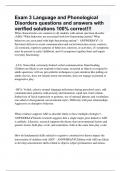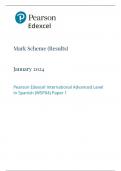-
1. Exam (elaborations) - Asd final exam questions and answers with verified solutions already passed!!!(graded...
-
2. Exam (elaborations) - Exam 1 intro to asd questions and answers with verified solutions rated a+
-
3. Exam (elaborations) - Asd final exam questions and answers with verified solutions already passed!!!
-
4. Exam (elaborations) - Asd test questions and answers with verified solutions already passed latest updated ...
-
5. Exam (elaborations) - Autism spectrum disorders final exam questions answers with verified solutions alread...
-
6. Exam (elaborations) - Asd midterm exam questions and answers with verified solutions already passed!!!
-
7. Exam (elaborations) - Final exam asd questions and answers with verified solutions 100% correct!!!
-
8. Exam (elaborations) - Exam 2 intro to asd questions and answers with verified solutions latest updated {202...
-
9. Exam (elaborations) - Exam 3: autism spectrum disorder questions and answers with verified solutions 100% c...
-
10. Exam (elaborations) - Asd final exam questions and answers with already passed solutions rated a+
-
11. Exam (elaborations) - Quiz/exam asd/health promotion questions and answers with verified solutions already ...
-
12. Exam (elaborations) - Autism final exam questions and answers with verified solutions already passed!!!
-
13. Exam (elaborations) - Autism exam 1 questions and answers with verified solutions already passed (graded a+...
-
14. Exam (elaborations) - Asd final exam questions and answer with verified solutions already passed!!!
-
15. Exam (elaborations) - Special topics adult asd final exam questions and answers with verified solutions alr...
-
16. Exam (elaborations) - Assessment of asd questions and answers with already passed solutions 100% correct!!!
-
17. Exam (elaborations) - Exam 2 autism spectrum disorders questions and answers with verified solutions alread...
-
18. Exam (elaborations) - Asd exam 2 questions ans answers with verified solutions 100% correct!!!
-
19. Exam (elaborations) - Asd 1-3 exam questions and answers with verified solutions already passed!!!
-
20. Exam (elaborations) - Autism spectrum disorders - exam 1 questions and answers with verified solutions (gra...
-
21. Exam (elaborations) - Autism spectrum exam 1 questions and answers with verified solutions already passed!!...
-
22. Exam (elaborations) - Asd exam 3 questions and answers with verified solutions already passed!!!
-
23. Exam (elaborations) - Asd exam 2 study guide questions and answers with verified solutions already passed l...
-
24. Exam (elaborations) - Asd test 1 questions and answers with verified solutions already passed!!!
-
25. Exam (elaborations) - Asd final exam jeopardy questions and answers with verified solutions already passed!...
-
26. Exam (elaborations) - Autism spectrum final exam questions and answers with verified solutions already pass...
-
27. Exam (elaborations) - Exam 3 (autism spectrum disorders - iris) questions and answers with verified solutio...
-
28. Exam (elaborations) - Autism spectrum disorders exam questions and answers with verified solutions already ...
-
29. Exam (elaborations) - Test 3 autism spectrum disorders questions and answers with verified solutions alread...
-
30. Exam (elaborations) - Autism exam 3 questions and answers with verified solutions already passed!!!
-
31. Exam (elaborations) - Asd teaching strategies questions and answers with verified solutions already passed!...
-
32. Exam (elaborations) - Sped 2000 exam 4 (ch. 9 autism spectrum disorders) questions and answers with verifie...
-
33. Exam (elaborations) - Module 2 post-test (autism spectrum disorders) questions and answers with verified so...
-
34. Exam (elaborations) - Psyc 208 final exam: asd and women questions and answers with verified solutions alre...
-
35. Exam (elaborations) - Formal exam chapters 1-4: spce 290 questions and answers with verified solutions alre...
-
36. Exam (elaborations) - Chapter 7 practice exam: spce 290 questions and answers with verified solutions alrea...
-
37. Exam (elaborations) - Exam 3 language and phonological disorders questions and answers with verified soluti...
-
38. Exam (elaborations) - Asd final exam questions and answers with verified solutions already passed!!!
-
39. Exam (elaborations) - Ed 190 exam practice questions and answers with verified solutions already passed 100...
-
40. Exam (elaborations) - Autism exam questions and answers with verified solutions already passed!!!
-
41. Exam (elaborations) - Ny autism exam questions and answers with verified solutions 100% correct !!!
-
42. Exam (elaborations) - Autism exam questions and answers with verified solutions 100% correct!!!
-
43. Exam (elaborations) - Autism final exam questions and answers with verified solutions already passed!!!
-
44. Exam (elaborations) - Asd questions and answers with verified solutions rated a+
-
45. Exam (elaborations) - Asd final exam questions and answers with verified solutions already passed!!!
-
46. Exam (elaborations) - Autism 1st exam questions and answers with verified solutions 100% correct!!!
-
47. Exam (elaborations) - Autism exam 2 questions and answers with verified solutions already passed!!!
-
48. Exam (elaborations) - Spaa 371 autism exam questions and answers with verified solutions already passed!!!
-
49. Exam (elaborations) - Autism questions and answers 100% correct with verified solutions latest updated 2024
-
50. Exam (elaborations) - Asd (questions from praxis book) questions and answers with verified solutions 100% c...
-
51. Exam (elaborations) - asd practice exam questions and answers 100% correct!!!
-
52. Exam (elaborations) - Nys autism exam questions and answers with verified solutions (graded a+)
-
53. Exam (elaborations) - Autism spectrum disorder final exam questions and answers with verified solutions 100...
-
54. Exam (elaborations) - Rbt test - introduction to autism spectrum disorders questions and answers with verif...
-
55. Exam (elaborations) - Autism spectrum disorder exam 4 review questions and answers with verified solutions ...
-
56. Exam (elaborations) - Autism psych exam 3 questions and answers with verified solutions 100% correct!!!
-
57. Exam (elaborations) - Asd exam one- dep questions and answers with verified solutions already passed!!!
-
58. Exam (elaborations) - Asd questions and answers with verified solutions already passed!!!
-
59. Exam (elaborations) - Asd questions and answers with verified solutions already passed!!!
-
60. Exam (elaborations) - Autism exam 1 questions and answers with verified solutions already passed latest upd...
-
Show more





